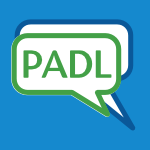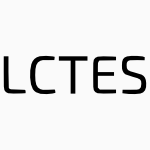106 papers:
 CIAA-2015-KushikY #automaton #finite #nondeterminism #sequence #state machine
CIAA-2015-KushikY #automaton #finite #nondeterminism #sequence #state machine- Describing Homing and Distinguishing Sequences for Nondeterministic Finite State Machines via Synchronizing Automata (NK, NY), pp. 188–198.
 SEKE-2015-FaniB #ontology #security
SEKE-2015-FaniB #ontology #security- An Ontology for Describing Security Events (HF, EB), pp. 455–460.
 HIMI-AS-2014-MaeshiroM #network #process
HIMI-AS-2014-MaeshiroM #network #process- Polyhedron Network Model to Describe Creative Processes (TM, MM), pp. 535–545.
 HIMI-DE-2014-WangGZY #microblog #visualisation
HIMI-DE-2014-WangGZY #microblog #visualisation- An Intuitive Way to Describe Our World: A Microblog LBS Visualization System (JMW, LG, RPZ, FY), pp. 108–119.
 ECSA-2013-CavalcanteMB #architecture
ECSA-2013-CavalcanteMB #architecture- Describing Cloud Applications Architectures (EC, ALM, TVB), pp. 320–323.
 ESEC-FSE-2013-DiGiuseppe #automation #fault
ESEC-FSE-2013-DiGiuseppe #automation #fault- Automatically describing software faults (ND), pp. 711–714.
 DocEng-2012-PeroniSV #documentation #lens #semantics #using
DocEng-2012-PeroniSV #documentation #lens #semantics #using- Faceted documents: describing document characteristics using semantic lenses (SP, DS, FV), pp. 191–194.
 ICEIS-v3-2012-FillRK #metamodelling #modelling #named
ICEIS-v3-2012-FillRK #metamodelling #modelling #named- FDMM: A Formalism for Describing ADOxx Meta Models and Models (HGF, TR, DK), pp. 133–144.
 ICEIS-v3-2012-TsudaASO #automation #classification
ICEIS-v3-2012-TsudaASO #automation #classification- A Classification Method of Inquiry e-Mails for Describing FAQ with Automatic Setting Mechanism of Judgment Threshold Values (YT, MA, MS, HO), pp. 199–205.
 ICML-2012-PrasseSLS #email #identification #learning #regular expression
ICML-2012-PrasseSLS #email #identification #learning #regular expression- Learning to Identify Regular Expressions that Describe Email Campaigns (PP, CS, NL, TS), p. 146.
 ICPR-2012-LiuLYZ #composition #learning #visual notation
ICPR-2012-LiuLYZ #composition #learning #visual notation- Learning to describe color composition of visual objects (YL, YL, ZY, NZ), pp. 3337–3340.
 KR-2012-BaralD #automation #how #learning #programming #set
KR-2012-BaralD #automation #how #learning #programming #set- Solving Puzzles Described in English by Automated Translation to Answer Set Programming and Learning How to Do that Translation (CB, JD).
 PADL-2012-Lesniak #algorithm #graph #haskell #named
PADL-2012-Lesniak #algorithm #graph #haskell #named- Palovca: Describing and Executing Graph Algorithms in Haskell (ML), pp. 153–167.
 ICST-2012-Oriol #evaluation #fault #random testing #testing
ICST-2012-Oriol #evaluation #fault #random testing #testing- Random Testing: Evaluation of a Law Describing the Number of Faults Found (MO), pp. 201–210.
 DLT-2011-KuncO #automaton #finite #using
DLT-2011-KuncO #automaton #finite #using- Describing Periodicity in Two-Way Deterministic Finite Automata Using Transformation Semigroups (MK, AO), pp. 324–336.
 IFL-2011-Thomsen #functional #logic #optimisation #using
IFL-2011-Thomsen #functional #logic #optimisation #using- Describing and Optimising Reversible Logic Using a Functional Language (MKT), pp. 148–163.
 KDD-2011-McCloskeyKIKB #behaviour #data mining #mining #using
KDD-2011-McCloskeyKIKB #behaviour #data mining #mining #using- From market baskets to mole rats: using data mining techniques to analyze RFID data describing laboratory animal behavior (DPM, MEK, SPI, IK, SBM), pp. 301–306.
 REFSQ-2011-BakalovaDHW #agile #requirements #what
REFSQ-2011-BakalovaDHW #agile #requirements #what- Agile Requirements Prioritization: What Happens in Practice and What Is Described in Literature (ZB, MD, AH, RW), pp. 181–195.
 ICSE-2011-SridharaPV #automation #detection
ICSE-2011-SridharaPV #automation #detection- Automatically detecting and describing high level actions within methods (GS, LLP, KVS), pp. 101–110.
 HT-2010-KornerKGS #evaluation #metric #motivation
HT-2010-KornerKGS #evaluation #metric #motivation- Of categorizers and describers: an evaluation of quantitative measures for tagging motivation (CK, RK, HPG, MS), pp. 157–166.
 VLDB-2010-MathioudakisBK #identification
VLDB-2010-MathioudakisBK #identification- Identifying, Attributing and Describing Spatial Bursts (MM, NB, NK), pp. 1091–1102.
 MSR-2010-MaalejH #development #question
MSR-2010-MaalejH #development #question- Can development work describe itself? (WM, HJH), pp. 191–200.
 CIAA-2010-Jonoska #automaton #self #using
CIAA-2010-Jonoska #automaton #self #using- Using Automata to Describe Self-Assembled Nanostructures (NJ), pp. 1–3.
 LATA-2010-HemmerlingSK #difference #equation #network #process #programming language #specification
LATA-2010-HemmerlingSK #difference #equation #network #process #programming language #specification- A Programming Language Tailored to the Specification and Solution of Differential Equations Describing Processes on Networks (RH, KS, WK), pp. 297–308.
 VLDB-2009-FriedmanPC #approach #named #pipes and filters #polymorphism #self #sql
VLDB-2009-FriedmanPC #approach #named #pipes and filters #polymorphism #self #sql- SQL/MapReduce: A practical approach to self-describing, polymorphic, and parallelizable user-defined functions (EF, PMP, JC), pp. 1402–1413.
 FASE-2009-AguirreFMMW #alloy #behaviour #specification #using
FASE-2009-AguirreFMMW #alloy #behaviour #specification #using- Describing and Analyzing Behaviours over Tabular Specifications Using (Dyn)Alloy (NA, MFF, MMM, TSEM, AW), pp. 155–170.
 MSR-2009-MaalejH #developer #how #question #word
MSR-2009-MaalejH #developer #how #question #word- From work to word: How do software developers describe their work? (WM, HJH), pp. 121–130.
 CHI-2009-LimLL
CHI-2009-LimLL- Interactivity attributes: a new way of thinking and describing interactivity (YKL, SSL, KyL), pp. 105–108.
 ICEIS-HCI-2009-NakanishiTO #artificial reality #complexity #design #effectiveness #guidelines #using #verification
ICEIS-HCI-2009-NakanishiTO #artificial reality #complexity #design #effectiveness #guidelines #using #verification- Study for Establishing Design Guidelines for Manuals using Augmented Reality Technology — Verification and Expansion of the Basic Model Describing “Effective Complexity” (MN, SiT, YO), pp. 21–26.
 SAC-2009-OyamaKI #haskell #monitoring #named #virtual machine
SAC-2009-OyamaKI #haskell #monitoring #named #virtual machine- Kenro: a virtual machine monitor mostly described in Haskell (YO, YK, HI), pp. 1940–1941.
 ICEIS-SAIC-2008-BaguesBBGI #communication #protocol #semantics
ICEIS-SAIC-2008-BaguesBBGI #communication #protocol #semantics- Use of Semantic Technology to Describe and Reason about Communication Protocols (MIB, IB, JB, AG, AI), pp. 67–72.
 DocEng-2007-PuginI #semantics
DocEng-2007-PuginI #semantics- Combination of transformation and schema languages described by a complete formal semantics (CP, RI), pp. 222–224.
 ITiCSE-2007-PedroniOM #education #framework
ITiCSE-2007-PedroniOM #education #framework- A framework for describing and comparing courses and curricula (MP, MO, BM), pp. 131–135.
 DocEng-2006-BrunoM #query #xml
DocEng-2006-BrunoM #query #xml- Describing and querying hierarchical XML structures defined over the same textual data (EB, EM), pp. 147–154.
 DocEng-2006-Maitre #documentation #multi #xml
DocEng-2006-Maitre #documentation #multi #xml- Describing multistructured XML documents by means of delay nodes (JLM), pp. 155–164.
 SEFM-2006-RaymondJR #random
SEFM-2006-RaymondJR #random- Describing and Executing Random Reactive Systems (PR, EJ, YR), pp. 216–225.
 CIKM-2006-KimC #concept #mining #named #similarity #taxonomy
CIKM-2006-KimC #concept #mining #named #similarity #taxonomy- CP/CV: concept similarity mining without frequency information from domain describing taxonomies (JWK, KSC), pp. 483–492.
 CIKM-2006-MullerFL #database #difference
CIKM-2006-MullerFL #database #difference- Describing differences between databases (HM, JCF, UL), pp. 612–621.
 SAC-2006-KacemKJD #architecture #uml #using
SAC-2006-KacemKJD #architecture #uml #using- Describing dynamic software architectures using an extended UML model (MHK, AHK, MJ, KD), pp. 1245–1249.
 ICDAR-2005-CostagliolaDR #diagrams #sketching
ICDAR-2005-CostagliolaDR #diagrams #sketching- Sketch Grammars: A Formalism for Describing and Recognizing Diagrammatic Sketch Languages (GC, VD, MR), pp. 1226–1231.
 MSR-2005-GermanCS #comprehension #development #framework #mining #tool support
MSR-2005-GermanCS #comprehension #development #framework #mining #tool support- A framework for describing and understanding mining tools in software development (DMG, DC, MADS), pp. 31–35.
 AdaEurope-2005-VergnaudPK #component #distributed #middleware #using
AdaEurope-2005-VergnaudPK #component #distributed #middleware #using- Using the AADL to Describe Distributed Applications from Middleware to Software Components (TV, LP, FK), pp. 67–78.
 RE-2005-Simmons #design #development
RE-2005-Simmons #design #development- The Usage Model: A Structure for Richly Describing Product Usage during Design and Development (ES), pp. 403–410.
 ICEIS-v3-2004-AllouiO #architecture #process #uml #using
ICEIS-v3-2004-AllouiO #architecture #process #uml #using- Describing Software-Intensive Process Architectures Using a UML-Based ADL (IA, FO), pp. 201–208.
 ICEIS-v3-2004-RukanovaSS #communication #how #metamodelling #towards
ICEIS-v3-2004-RukanovaSS #communication #how #metamodelling #towards- Towards a Meta Model for Describing Communication: How to Address Interoperability on a Pragmatic Level (BR, KvS, RAS), pp. 375–382.
 KR-2004-HaarslevM #documentation #optimisation #owl #rdf
KR-2004-HaarslevM #documentation #optimisation #owl #rdf- Optimization Techniques for Retrieving Resources Described in OWL/RDF Documents: First Results (VH, RM), pp. 163–174.
 DAC-2003-MeyerowitzPS #policy #realtime #scheduling
DAC-2003-MeyerowitzPS #policy #realtime #scheduling- A tool for describing and evaluating hierarchical real-time bus scheduling policies (TM, CP, ALSV), pp. 312–317.
 DAC-2003-SaifhashemiP #abstraction #framework #modelling
DAC-2003-SaifhashemiP #abstraction #framework #modelling- Verilog HDL, powered by PLI: a suitable framework for describing and modeling asynchronous circuits at all levels of abstraction (AS, HP), pp. 330–333.
 CAiSE-2003-TsinarakiFC #framework #metadata #semantics
CAiSE-2003-TsinarakiFC #framework #metadata #semantics- An Ontology-Driven Framework for the Management of Semantic Metadata Describing Audiovisual Information (CT, EF, SC), pp. 340–356.
 SAC-2003-RuckhausV #named #ontology #web
SAC-2003-RuckhausV #named #ontology #web- WebSOGO: A Global Ontology for Describing Web Sources (ER, MEV), pp. 1199–1205.
 ICSE-2003-RobillardM #source code
ICSE-2003-RobillardM #source code- FEAT. A Tool for Locating, Describing, and Analyzing Concerns in Source Code (MPR, GCM), pp. 822–823.
 WICSA-2002-SmolanderP #architecture
WICSA-2002-SmolanderP #architecture- Practical Rationale for Describing Software Architecture (KS, TP), pp. 113–125.
 FME-2002-UmeduTYNHT #mobile #multi
FME-2002-UmeduTYNHT #mobile #multi- A Language for Describing Wireless Mobile Applications with Dynamic Establishment of Multi-way Synchronization Channels (TU, YT, KY, AN, TH, KT), pp. 607–624.
 ICGT-2002-KochP #constraints #graph #policy
ICGT-2002-KochP #constraints #graph #policy- Describing Policies with Graph Constraints and Rules (MK, FPP), pp. 223–238.
 CAiSE-2002-SmolanderP #architecture #communication
CAiSE-2002-SmolanderP #architecture #communication- Describing and Communicating Software Architecture in Practice: Observations on Stakeholders and Rationale (KS, TP), pp. 117–133.
 ICPR-v2-2002-SerratosaSA #3d #graph #modelling #multi #using
ICPR-v2-2002-SerratosaSA #3d #graph #modelling #multi #using- Modelling and Recognising 3D-Objects Described by Multiple Views Using Function-Described Graphs (FS, AS, RA), pp. 140–143.
 UML-2002-VarroP #framework #metamodelling #modelling #precise #semantics #uml #visual notation
UML-2002-VarroP #framework #metamodelling #modelling #precise #semantics #uml #visual notation- Metamodeling Mathematics: A Precise and Visual Framework for Describing Semantics Domains of UML Models (DV, AP), pp. 18–33.
 RE-2002-FranchC #approach
RE-2002-FranchC #approach- A Quality-Model-Based Approach for Describing and Evaluating Software Packages (XF, JPC), pp. 104–111.
 ICSE-2002-KruchtenSK #architecture #named #tutorial #uml
ICSE-2002-KruchtenSK #architecture #named #tutorial #uml- Tutorial: describing software architecture with UML (PK, BS, WK), pp. 693–694.
 ICSE-2002-Robillard #representation #source code
ICSE-2002-Robillard #representation #source code- A representation for describing and analyzing concerns in source code (MPR), pp. 721–722.
 ICSE-2002-RobillardM #dependence #graph #using
ICSE-2002-RobillardM #dependence #graph #using- Concern graphs: finding and describing concerns using structural program dependencies (MPR, GCM), pp. 406–416.
 LCTES-SCOPES-2002-MilnerD #performance #pipes and filters
LCTES-SCOPES-2002-MilnerD #performance #pipes and filters- Quick piping: a fast, high-level model for describing processor pipelines (CWM, JWD), pp. 175–184.
 CBSE-2001-VieiraDR #component #dependence
CBSE-2001-VieiraDR #component #dependence- Describing Dependencies in Component Access Points (MERV, MSD, DJR), p. 22.
 DATE-2001-SvarstadNJ #communication #design #embedded #specification
DATE-2001-SvarstadNJ #communication #design #embedded #specification- A model for describing communication between aggregate objects in the specification and design of embedded systems (KS, GN, AAJ), pp. 77–85.
 HT-2001-ConlanHLWA #adaptation #learning #metadata
HT-2001-ConlanHLWA #adaptation #learning #metadata- Extending eductional metadata schemas to describe adaptive learning resources (OC, CH, PL, VPW, DA), pp. 161–162.
 ICSM-2001-Lemos #architecture #evolution #using
ICSM-2001-Lemos #architecture #evolution #using- Describing Evolving Dependable Systems Using Co-Operative Software Architectures (RdL), p. 320–?.
 LSO-2001-LindvallFCT #experience #lessons learnt
LSO-2001-LindvallFCT #experience #lessons learnt- Lessons Learned about Structuring and Describing Experience for Three Experience Bases (ML, MF, PC, RT), pp. 106–119.
 TOOLS-USA-2001-Arsanjani01d #adaptation #component #design #self
TOOLS-USA-2001-Arsanjani01d #adaptation #component #design #self- Grammar-Oriented Object Design: Creating Adaptive Collaborations and Dynamic Configurations with Self-Describing Components and Services (AA), pp. 409–414.
 ICSE-2001-SelicK #architecture #uml
ICSE-2001-SelicK #architecture #uml- Describing Software Architecture with UML (PK, BS, WK), pp. 715–716.
 ICSE-2001-SelicKLB #architecture #uml
ICSE-2001-SelicKLB #architecture #uml- Describing Software Architecture with UML (PK, BS, WK, GL, AWB), p. 777.
 FASE-2000-NelsonCA #multi #object-oriented
FASE-2000-NelsonCA #multi #object-oriented- A Model for Describing Object-Oriented Systems from Multiple Perspectives (TN, DDC, PSCA), pp. 237–248.
 ICPR-v2-2000-SanfeliuAS #clustering #graph #synthesis
ICPR-v2-2000-SanfeliuAS #clustering #graph #synthesis- Clustering of Attributed Graphs and Unsupervised Synthesis of Function-Described Graphs (AS, RA, FS), pp. 6022–6025.
 ICPR-v2-2000-SerratosaAS #algorithm #graph #performance
ICPR-v2-2000-SerratosaAS #algorithm #graph #performance- Efficient Algorithms for Matching Attributed Graphs and Function-Described Graphs (FS, RA, AS), pp. 2867–2872.
 UML-2000-PickinM #analysis #uml
UML-2000-PickinM #analysis #uml- Describing AI Analysis Patterns with UML (SP, AMR), pp. 466–481.
 WICSA-1999-HofmeisterNS #architecture #uml
WICSA-1999-HofmeisterNS #architecture #uml- Describing Software Architecture with UML (CH, RLN, DS), pp. 145–160.
 WICSA-1999-MugisaM #architecture #framework #reuse
WICSA-1999-MugisaM #architecture #framework #reuse- A Framework for Describing Software Architectures for Reuse (EKM, TSEM), pp. 245–272.
 ICDAR-1999-BansalS #how #on the #recognition
ICDAR-1999-BansalS #how #on the #recognition- On How to Describe Shapes of Devanagari Characters and Use Them for Recognition (VB, RMKS), pp. 410–413.
 ESOP-1999-BenediktRS #data type #decidability #linked data #logic #open data
ESOP-1999-BenediktRS #data type #decidability #linked data #logic #open data- A Decidable Logic for Describing Linked Data Structures (MB, TWR, SS), pp. 2–19.
 FASE-1999-LopesF #using
FASE-1999-LopesF #using- Using Explicit State to Describe Architechtures (AL, JLF), pp. 144–160.
 CIKM-1999-LabrouF #category theory #documentation #exclamation #ontology #using
CIKM-1999-LabrouF #category theory #documentation #exclamation #ontology #using- Yahoo! As an Ontology: Using Yahoo! Categories to Describe Documents (YL, TWF), pp. 180–187.
 TOOLS-ASIA-1999-ShenLSZ #algorithm #architecture #graph #object-oriented #using
TOOLS-ASIA-1999-ShenLSZ #algorithm #architecture #graph #object-oriented #using- An Algorithm for Describing Object-Oriented Software Architecture Using Graph (HHS, CL, MMS, WMZ), pp. 225–231.
 GCSE-1999-DHondtMW #logic programming #using
GCSE-1999-DHondtMW #logic programming #using- Using Reflective Logic Programming to Describe Domain Knowledge as an Aspect (MD, WDM, RW), pp. 16–23.
 CAiSE-1998-NurcanGS #approach #case study #process
CAiSE-1998-NurcanGS #approach #case study #process- Describing Business Processes with a Guided Use Case Approach (SN, GG, CS), pp. 339–362.
 ICPR-1998-WangHRKJ #3d #invariant #recognition #statistics
ICPR-1998-WangHRKJ #3d #invariant #recognition #statistics- A statistical model to describe invariants extracted from a 3-D quadric surface patch and its applications in region-based recognition (GW, ZH, PPLR, MJK, GJ), pp. 668–672.
 ICDAR-1997-RamelVB
ICDAR-1997-RamelVB- Bezier Curves as a Tool to Describe Kinetic Drawings (JYR, NV, JMB), pp. 780–783.
 VLDB-1997-VassalosP #query #using
VLDB-1997-VassalosP #query #using- Describing and Using Query Capabilities of Heterogeneous Sources (VV, YP), pp. 256–265.
 PLILP-1997-JanousekM #lr
PLILP-1997-JanousekM #lr- Formal Translations Described by Translation Grammars with LR(k) Input Grammars (JJ, BM), pp. 421–422.
 CSCW-1996-CortesM #collaboration #named #programming language
CSCW-1996-CortesM #collaboration #named #programming language- DCWPL: A Programming Language for Describing Collaborative Work (MC, PM), pp. 21–29.
 ICPR-1996-AlquezarS #context-sensitive grammar #learning #regular expression
ICPR-1996-AlquezarS #context-sensitive grammar #learning #regular expression- Learning of context-sensitive languages described by augmented regular expressions (RA, AS), pp. 745–749.
 ICPR-1996-SukanyaTTS #image
ICPR-1996-SukanyaTTS #image- A new operator for describing topographical image structure (PS, HT, RT, MS), pp. 50–54.
 CIKM-1993-Mineau #documentation #multi
CIKM-1993-Mineau #documentation #multi- Facilitating the Creation of a Multiple Index on Graph-Described Documents by Transforming Their Descriptions (GWM), pp. 132–138.
 SEKE-1993-MochizukiYK #design #modelling #process
SEKE-1993-MochizukiYK #design #modelling #process- Two Models for Describing Software Design Process: Object-Centered Model and Phase-Centered Model (SM, AY, TK), pp. 291–295.
 SAC-1993-KountanisS #concept #graph #learning
SAC-1993-KountanisS #concept #graph #learning- Graphs as a Language to Describe Learning System Concepts (DIK, ES), pp. 469–475.
 TRI-Ada-C-1992-Cherry #ada #behaviour
TRI-Ada-C-1992-Cherry #ada #behaviour- Stimulus Response Machines: An Ada-based Graphic Formalism for Describing Class and Object Behavior (GWC), pp. 321–332.
 GG-1990-Barthelmann #category theory #graph grammar
GG-1990-Barthelmann #category theory #graph grammar- Describing Göttler’s Operational Graph Grammars with Pushouts (KB), pp. 98–112.
 KR-1989-Sandewall #difference #equation #logic
KR-1989-Sandewall #difference #equation #logic- Combining Logic and Differential Equations for Describing Real-World Systems (ES), pp. 412–420.
 DAC-1988-BaerLMNSW #multi
DAC-1988-BaerLMNSW #multi- A Notation for Describing Multiple Views of VLSI Circuits (JLB, MCL, LM, RN, LS, WW), pp. 102–107.
 DAC-1986-NgTR
DAC-1986-NgTR- A language for describing rectilinear Steiner tree configurations (APCN, CDT, PR), pp. 659–662.
 DAC-1985-GiambiasiMLdDR #adaptation #modelling
DAC-1985-GiambiasiMLdDR #adaptation #modelling- An adaptive and evolutive tool for describing general hierarchical models, based on frames and demons (NG, BM, RL, LDd, CD, PR), pp. 460–467.
 DAC-1982-LiptonNSVV #named
DAC-1982-LiptonNSVV #named- ALI: A procedural language to describe VLSI layouts (RJL, SCN, RS, JV, GV), pp. 467–474.
 VDM-1978-HenhaplJ #algol
VDM-1978-HenhaplJ #algol- A Formal Definition of Algol 60 as Described in the 1975 Modified Report (WH, CBJ), pp. 305–336.
 GG-1978-Pfaltz #2d #graph grammar #network #set
GG-1978-Pfaltz #2d #graph grammar #network #set- A Graph Grammar that Describes the Set of Two-Dimensional Surface Networks (JLP), pp. 379–388.
 SIGMOD-1976-Kahn #database #design #process
SIGMOD-1976-Kahn #database #design #process- A Method for Describing Information Required by the Database Design Process (BKK), pp. 53–64.
 SIGMOD-1975-WelchG #information retrieval #set #using
SIGMOD-1975-WelchG #information retrieval #set #using- Information Retrieval in Files Described Using Sets (JWW, JWG), pp. 92–98.
 DAC-1970-Borgmeyer #mockup
DAC-1970-Borgmeyer #mockup- A mathematical mockup — engine envelope described by computer (CHB), pp. 310–314.
 SIGFIDET-1970-SymondsL #database #relational
SIGFIDET-1970-SymondsL #database #relational- A Schema for Describing a Relational Data Base (AJS, RAL), pp. 230–245.
 CIAA-2015-KushikY #automaton #finite #nondeterminism #sequence #state machine
CIAA-2015-KushikY #automaton #finite #nondeterminism #sequence #state machine SEKE-2015-FaniB #ontology #security
SEKE-2015-FaniB #ontology #security HIMI-AS-2014-MaeshiroM #network #process
HIMI-AS-2014-MaeshiroM #network #process HIMI-DE-2014-WangGZY #microblog #visualisation
HIMI-DE-2014-WangGZY #microblog #visualisation ECSA-2013-CavalcanteMB #architecture
ECSA-2013-CavalcanteMB #architecture ESEC-FSE-2013-DiGiuseppe #automation #fault
ESEC-FSE-2013-DiGiuseppe #automation #fault DocEng-2012-PeroniSV #documentation #lens #semantics #using
DocEng-2012-PeroniSV #documentation #lens #semantics #using ICEIS-v3-2012-FillRK #metamodelling #modelling #named
ICEIS-v3-2012-FillRK #metamodelling #modelling #named ICEIS-v3-2012-TsudaASO #automation #classification
ICEIS-v3-2012-TsudaASO #automation #classification ICML-2012-PrasseSLS #email #identification #learning #regular expression
ICML-2012-PrasseSLS #email #identification #learning #regular expression ICPR-2012-LiuLYZ #composition #learning #visual notation
ICPR-2012-LiuLYZ #composition #learning #visual notation KR-2012-BaralD #automation #how #learning #programming #set
KR-2012-BaralD #automation #how #learning #programming #set PADL-2012-Lesniak #algorithm #graph #haskell #named
PADL-2012-Lesniak #algorithm #graph #haskell #named ICST-2012-Oriol #evaluation #fault #random testing #testing
ICST-2012-Oriol #evaluation #fault #random testing #testing DLT-2011-KuncO #automaton #finite #using
DLT-2011-KuncO #automaton #finite #using IFL-2011-Thomsen #functional #logic #optimisation #using
IFL-2011-Thomsen #functional #logic #optimisation #using KDD-2011-McCloskeyKIKB #behaviour #data mining #mining #using
KDD-2011-McCloskeyKIKB #behaviour #data mining #mining #using REFSQ-2011-BakalovaDHW #agile #requirements #what
REFSQ-2011-BakalovaDHW #agile #requirements #what ICSE-2011-SridharaPV #automation #detection
ICSE-2011-SridharaPV #automation #detection HT-2010-KornerKGS #evaluation #metric #motivation
HT-2010-KornerKGS #evaluation #metric #motivation VLDB-2010-MathioudakisBK #identification
VLDB-2010-MathioudakisBK #identification MSR-2010-MaalejH #development #question
MSR-2010-MaalejH #development #question CIAA-2010-Jonoska #automaton #self #using
CIAA-2010-Jonoska #automaton #self #using LATA-2010-HemmerlingSK #difference #equation #network #process #programming language #specification
LATA-2010-HemmerlingSK #difference #equation #network #process #programming language #specification VLDB-2009-FriedmanPC #approach #named #pipes and filters #polymorphism #self #sql
VLDB-2009-FriedmanPC #approach #named #pipes and filters #polymorphism #self #sql FASE-2009-AguirreFMMW #alloy #behaviour #specification #using
FASE-2009-AguirreFMMW #alloy #behaviour #specification #using MSR-2009-MaalejH #developer #how #question #word
MSR-2009-MaalejH #developer #how #question #word CHI-2009-LimLL
CHI-2009-LimLL ICEIS-HCI-2009-NakanishiTO #artificial reality #complexity #design #effectiveness #guidelines #using #verification
ICEIS-HCI-2009-NakanishiTO #artificial reality #complexity #design #effectiveness #guidelines #using #verification SAC-2009-OyamaKI #haskell #monitoring #named #virtual machine
SAC-2009-OyamaKI #haskell #monitoring #named #virtual machine ICEIS-SAIC-2008-BaguesBBGI #communication #protocol #semantics
ICEIS-SAIC-2008-BaguesBBGI #communication #protocol #semantics DocEng-2007-PuginI #semantics
DocEng-2007-PuginI #semantics ITiCSE-2007-PedroniOM #education #framework
ITiCSE-2007-PedroniOM #education #framework DocEng-2006-BrunoM #query #xml
DocEng-2006-BrunoM #query #xml DocEng-2006-Maitre #documentation #multi #xml
DocEng-2006-Maitre #documentation #multi #xml SEFM-2006-RaymondJR #random
SEFM-2006-RaymondJR #random CIKM-2006-KimC #concept #mining #named #similarity #taxonomy
CIKM-2006-KimC #concept #mining #named #similarity #taxonomy CIKM-2006-MullerFL #database #difference
CIKM-2006-MullerFL #database #difference SAC-2006-KacemKJD #architecture #uml #using
SAC-2006-KacemKJD #architecture #uml #using ICDAR-2005-CostagliolaDR #diagrams #sketching
ICDAR-2005-CostagliolaDR #diagrams #sketching MSR-2005-GermanCS #comprehension #development #framework #mining #tool support
MSR-2005-GermanCS #comprehension #development #framework #mining #tool support AdaEurope-2005-VergnaudPK #component #distributed #middleware #using
AdaEurope-2005-VergnaudPK #component #distributed #middleware #using RE-2005-Simmons #design #development
RE-2005-Simmons #design #development ICEIS-v3-2004-AllouiO #architecture #process #uml #using
ICEIS-v3-2004-AllouiO #architecture #process #uml #using ICEIS-v3-2004-RukanovaSS #communication #how #metamodelling #towards
ICEIS-v3-2004-RukanovaSS #communication #how #metamodelling #towards KR-2004-HaarslevM #documentation #optimisation #owl #rdf
KR-2004-HaarslevM #documentation #optimisation #owl #rdf DAC-2003-MeyerowitzPS #policy #realtime #scheduling
DAC-2003-MeyerowitzPS #policy #realtime #scheduling DAC-2003-SaifhashemiP #abstraction #framework #modelling
DAC-2003-SaifhashemiP #abstraction #framework #modelling CAiSE-2003-TsinarakiFC #framework #metadata #semantics
CAiSE-2003-TsinarakiFC #framework #metadata #semantics SAC-2003-RuckhausV #named #ontology #web
SAC-2003-RuckhausV #named #ontology #web ICSE-2003-RobillardM #source code
ICSE-2003-RobillardM #source code WICSA-2002-SmolanderP #architecture
WICSA-2002-SmolanderP #architecture FME-2002-UmeduTYNHT #mobile #multi
FME-2002-UmeduTYNHT #mobile #multi ICGT-2002-KochP #constraints #graph #policy
ICGT-2002-KochP #constraints #graph #policy CAiSE-2002-SmolanderP #architecture #communication
CAiSE-2002-SmolanderP #architecture #communication ICPR-v2-2002-SerratosaSA #3d #graph #modelling #multi #using
ICPR-v2-2002-SerratosaSA #3d #graph #modelling #multi #using UML-2002-VarroP #framework #metamodelling #modelling #precise #semantics #uml #visual notation
UML-2002-VarroP #framework #metamodelling #modelling #precise #semantics #uml #visual notation RE-2002-FranchC #approach
RE-2002-FranchC #approach ICSE-2002-KruchtenSK #architecture #named #tutorial #uml
ICSE-2002-KruchtenSK #architecture #named #tutorial #uml ICSE-2002-Robillard #representation #source code
ICSE-2002-Robillard #representation #source code ICSE-2002-RobillardM #dependence #graph #using
ICSE-2002-RobillardM #dependence #graph #using LCTES-SCOPES-2002-MilnerD #performance #pipes and filters
LCTES-SCOPES-2002-MilnerD #performance #pipes and filters CBSE-2001-VieiraDR #component #dependence
CBSE-2001-VieiraDR #component #dependence DATE-2001-SvarstadNJ #communication #design #embedded #specification
DATE-2001-SvarstadNJ #communication #design #embedded #specification HT-2001-ConlanHLWA #adaptation #learning #metadata
HT-2001-ConlanHLWA #adaptation #learning #metadata ICSM-2001-Lemos #architecture #evolution #using
ICSM-2001-Lemos #architecture #evolution #using LSO-2001-LindvallFCT #experience #lessons learnt
LSO-2001-LindvallFCT #experience #lessons learnt TOOLS-USA-2001-Arsanjani01d #adaptation #component #design #self
TOOLS-USA-2001-Arsanjani01d #adaptation #component #design #self ICSE-2001-SelicK #architecture #uml
ICSE-2001-SelicK #architecture #uml ICSE-2001-SelicKLB #architecture #uml
ICSE-2001-SelicKLB #architecture #uml FASE-2000-NelsonCA #multi #object-oriented
FASE-2000-NelsonCA #multi #object-oriented ICPR-v2-2000-SanfeliuAS #clustering #graph #synthesis
ICPR-v2-2000-SanfeliuAS #clustering #graph #synthesis ICPR-v2-2000-SerratosaAS #algorithm #graph #performance
ICPR-v2-2000-SerratosaAS #algorithm #graph #performance UML-2000-PickinM #analysis #uml
UML-2000-PickinM #analysis #uml WICSA-1999-HofmeisterNS #architecture #uml
WICSA-1999-HofmeisterNS #architecture #uml WICSA-1999-MugisaM #architecture #framework #reuse
WICSA-1999-MugisaM #architecture #framework #reuse ICDAR-1999-BansalS #how #on the #recognition
ICDAR-1999-BansalS #how #on the #recognition ESOP-1999-BenediktRS #data type #decidability #linked data #logic #open data
ESOP-1999-BenediktRS #data type #decidability #linked data #logic #open data FASE-1999-LopesF #using
FASE-1999-LopesF #using CIKM-1999-LabrouF #category theory #documentation #exclamation #ontology #using
CIKM-1999-LabrouF #category theory #documentation #exclamation #ontology #using TOOLS-ASIA-1999-ShenLSZ #algorithm #architecture #graph #object-oriented #using
TOOLS-ASIA-1999-ShenLSZ #algorithm #architecture #graph #object-oriented #using GCSE-1999-DHondtMW #logic programming #using
GCSE-1999-DHondtMW #logic programming #using CAiSE-1998-NurcanGS #approach #case study #process
CAiSE-1998-NurcanGS #approach #case study #process ICPR-1998-WangHRKJ #3d #invariant #recognition #statistics
ICPR-1998-WangHRKJ #3d #invariant #recognition #statistics ICDAR-1997-RamelVB
ICDAR-1997-RamelVB VLDB-1997-VassalosP #query #using
VLDB-1997-VassalosP #query #using PLILP-1997-JanousekM #lr
PLILP-1997-JanousekM #lr CSCW-1996-CortesM #collaboration #named #programming language
CSCW-1996-CortesM #collaboration #named #programming language ICPR-1996-AlquezarS #context-sensitive grammar #learning #regular expression
ICPR-1996-AlquezarS #context-sensitive grammar #learning #regular expression ICPR-1996-SukanyaTTS #image
ICPR-1996-SukanyaTTS #image CIKM-1993-Mineau #documentation #multi
CIKM-1993-Mineau #documentation #multi SEKE-1993-MochizukiYK #design #modelling #process
SEKE-1993-MochizukiYK #design #modelling #process SAC-1993-KountanisS #concept #graph #learning
SAC-1993-KountanisS #concept #graph #learning TRI-Ada-C-1992-Cherry #ada #behaviour
TRI-Ada-C-1992-Cherry #ada #behaviour GG-1990-Barthelmann #category theory #graph grammar
GG-1990-Barthelmann #category theory #graph grammar KR-1989-Sandewall #difference #equation #logic
KR-1989-Sandewall #difference #equation #logic DAC-1988-BaerLMNSW #multi
DAC-1988-BaerLMNSW #multi DAC-1986-NgTR
DAC-1986-NgTR DAC-1985-GiambiasiMLdDR #adaptation #modelling
DAC-1985-GiambiasiMLdDR #adaptation #modelling DAC-1982-LiptonNSVV #named
DAC-1982-LiptonNSVV #named VDM-1978-HenhaplJ #algol
VDM-1978-HenhaplJ #algol GG-1978-Pfaltz #2d #graph grammar #network #set
GG-1978-Pfaltz #2d #graph grammar #network #set SIGMOD-1976-Kahn #database #design #process
SIGMOD-1976-Kahn #database #design #process SIGMOD-1975-WelchG #information retrieval #set #using
SIGMOD-1975-WelchG #information retrieval #set #using DAC-1970-Borgmeyer #mockup
DAC-1970-Borgmeyer #mockup SIGFIDET-1970-SymondsL #database #relational
SIGFIDET-1970-SymondsL #database #relational









